Preparing For Your First Flying Job Lecture - Cooking Lake Aviation Academy, February 10, 2018
- Foxtrot Alpha

- Feb 11, 2018
- 6 min read
Updated: May 23

Yesterday at the Cooking Lake Aviation Academy (CLAA) in Sherwood Park, AB I gave a lecture to a group of Commercial Pilot Students. It was wonderful to meet and talk to a group of pilots which a vast range of backgrounds, ages and experiences.
I was able to speak about my last 7 years as a Professional Pilot and the many highs and lows during that time in the corner office of the sky. I was asked by one of the students why I wanted to mentor pilots, it is a hard question to answer quickly, for me I want to share my knowledge that I have amassed in 7 years of flying professionally, some of that experience has been hard earned. I really wish someone took the time to show me some of the basic things and the not so basic things, that I am passing onto our new generation of Commercial Pilots. The fact is, this new group will likely be in the right seat of a turboprop or a jet very soon. These pilot’s need a hand, a big hand, so they can succeed in this industry. I believe that sharing my experiences and knowledge is something that can really help new Commercial Pilots get ahead of the huge learning curve they will experience when they get their first flying job. I also really enjoy being around people who love and share my passion for aviation.
I want to thank Ben Match, Cooking Lake CFI for the invitation to speak to his students and to spend some time meeting the newest Commercial Aviators in town.
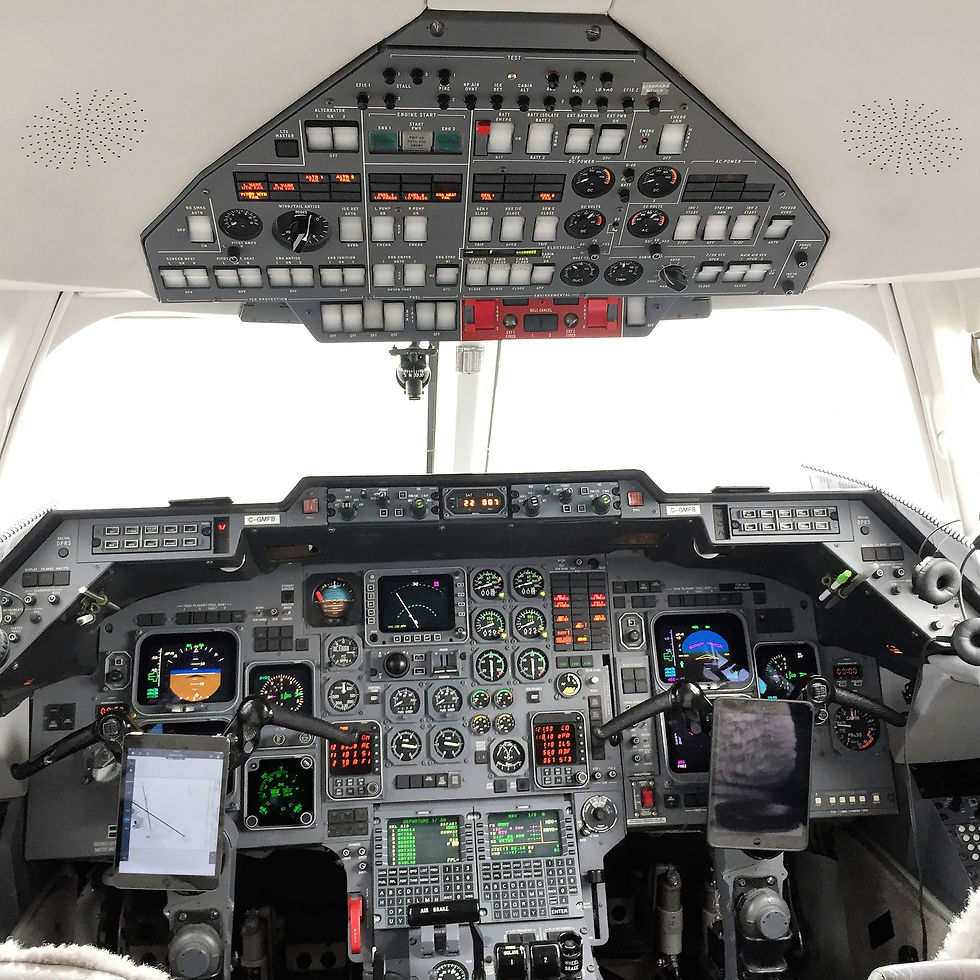
My lecture centred around a fictional flight in a Hawker HS125-800A from CYWG to CYYT. Below is just a taste of some of the things we discussed during my 3 hours spent with the CLAA students.
We discussed the role of the right seat pilot, walk-around of the aircraft, ensuring the passenger cabin is clean and stocked including coffee, ice and papers. Checklist completion for power-off, power-on, APU start, more checklists and the initial preparation stages for our flight. We looked at an actual Hawker 125 checklist and the time it takes to complete these important pre-flight tasks.
The students were shown an electronic flight plan and worked together to come up with the performance information required to complete the flight. We started off with a predetermined weight and balance, the CYWG ATIS and then determined our pressure altitude.

I asked how to determine the pressure altitude and I was given, set the altimeter to 29.92″ and you read what whatever the altimeter reads, the correct answer for sure, but what if we are still at the hotel or in the FBO? I personally use an App called My E6B Aviation Calculator. This App is so handy for me, I use it for pressure altitude, add and subtract time, fuel conversions, wind components and on and on. This is the best App I have ever used, I highly recommend this App.
Once we had this pressure altitude figured out, we moved into a performance chart (see above) to determine the V1, VR, V2, VFTO “flap retraction speed”, takeoff distance required and our emergency return Vref. Our aircraft weight for the flight was 27,000 lbs for the takeoff. We entered the chart at the predetermined pressure altitude of 1000, moved to the 27,000 lbs column, found the closest OAT of 29 degrees.
We came up with: V1: 134 Vr: 134 V2: 136 VFTO: 169, Emergency Vref: 140 and a takeoff distance of 7200′ feet.
7200′ takeoff roll distance on an 8700′ long runway!
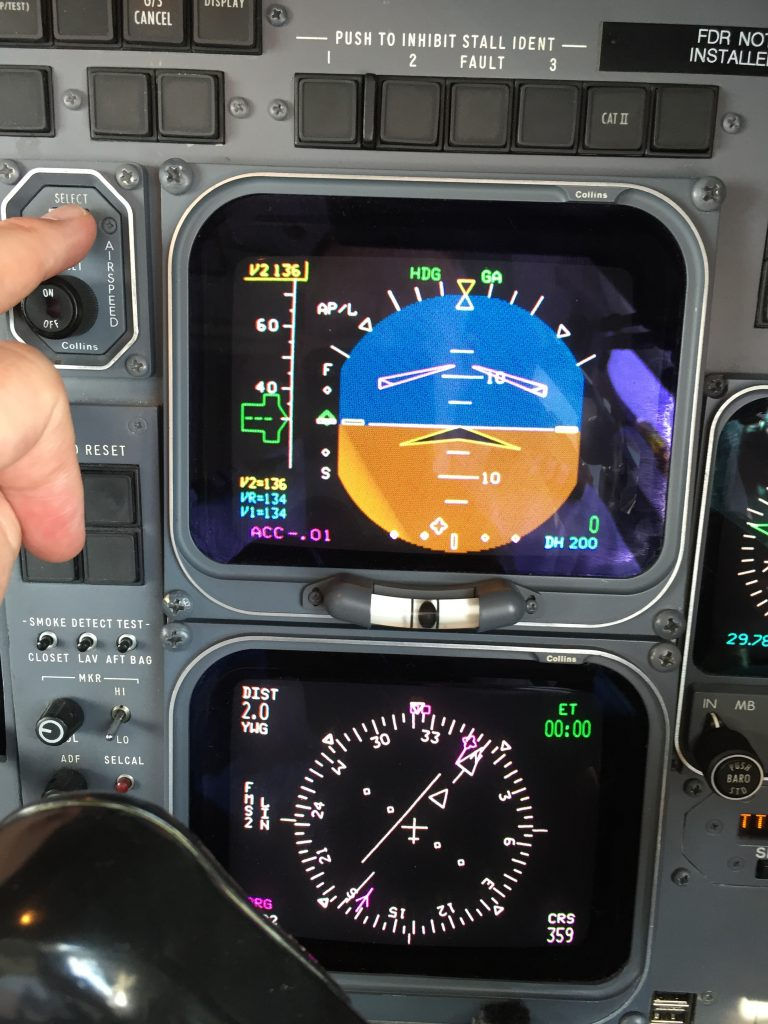
We then hypothetically set the speeds (as seen above in the real aircraft) using the airspeed select window. Selecting 80 for “80 Knots call speed, Pilot incapacitation Call Speed”, V1, VR, V2, VFTO and our emergency return Vref of 140 KIAS.

We then pulled out another performance chart to determine the N1% (low-pressure spool, including the fan) required for the flight. Coming into the chart at the pressure altitude of 1000′ and an OAT of 25 degrees, we determined the N1 of the day to be 96.1%.

We then hypothetically set the N1% using the setting knob (not shown correctly above) for our flight. We then discussed that our aircraft has FADEC Honeywell TFE731-5BR-1H turbofan engines, this meant that during takeoff the pilot flying (PF) would apply full power on both engines, the DEECs (digital electronic engine computers) would provide over-speed and over-temp protection for us. Once the PF set the power to maximum, the pilot-not-flying (PNF) would confirm that both engine N1 pointers were pointing at our required N1% and then call out “take-off power obtained”. We also discussed that our aircraft is equipped with APR (automatic performance reserve”, a system that looks at N2% (high pressure spool, main centrifugal compressor) differences and if the system sees a 5% difference occurring, the system will allow the higher N2 engine to reach maximum rotational and temperature limits (such as in a V1 cut scenario). This system is tested during taxi-out and is armed by the PNF during the takeoff roll.


We discussed the importance of crossing checking your fuel upload (in litres/gallons) to the required amount of fuel required. This is a rough check to confirm the amount of fuel that was boarded matches the fuel that is in the tanks. Why is this so important? a fuel exhaustion accident involving an ATR-72 aircraft in the Mediterranean occurred in 2005. Accidentally an FQI (fuel quantity indicator) was swapped from an ATR42 to an ATR72, these aircraft have very different fuel tank capacities. Because the crew did not know the FQIs were changed, they read the amount on the FQI which was reading wrong, they desired 2700 Kgs of fuel for the flight, when in fact they only had approx 570 Kg of fuel. The aircraft ran out of fuel (with over 1700 kg of fuel showing on the FQI) over the ocean, ditched on the ocean, due to many factors, 16 people lost their lives.

9952 lbs required, fuel onboard prior to fueling 3300 lbs We require 6652 lbs of fuel Fuel uplifted 3770 litres 3770 litres/1.80 = 6786 lbs (134 lbs difference) This is a rough check of the fuel quantity indicators compared to the fuel uplift.
Does your fuel check? Yes (we are within 130 lbs)
We also practiced setting up flight plan into a Jeppesen iPad App.
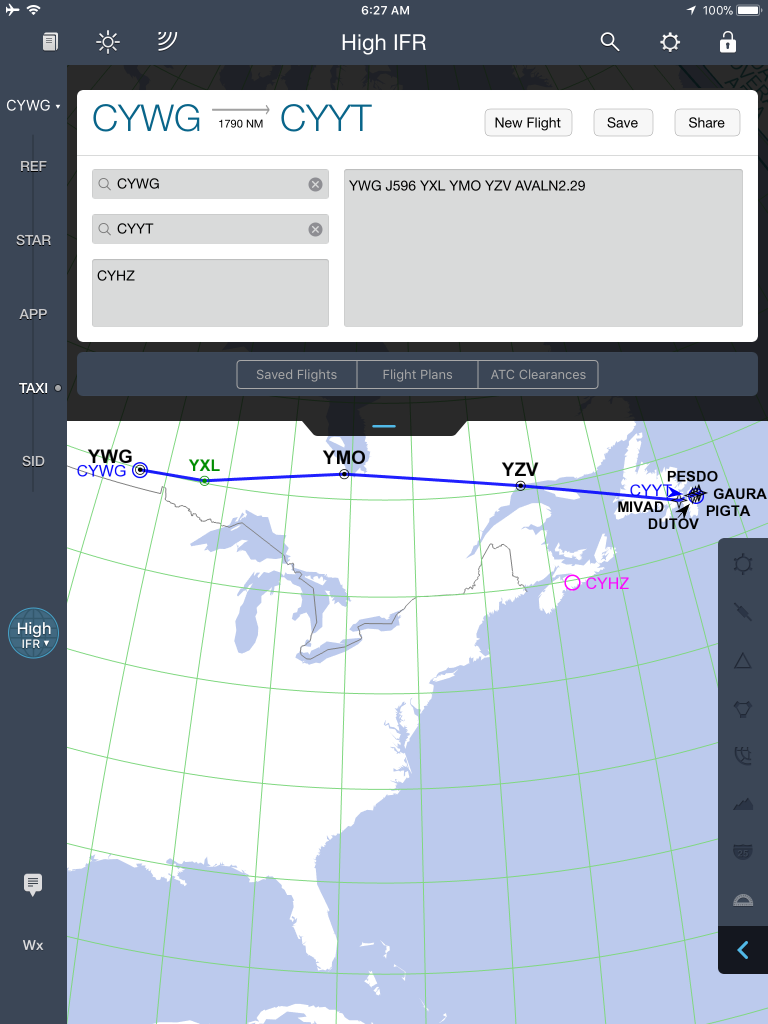
Our fictitious route for the flight.

We discussed the importance of verifying the LAT and LONG of your starting point airport in your FMS. In this example, we can see the start-up screen of the Universal FMS, we verify a number of things on this screen, firstly the System Date, the Nav Database expiry date, the UTC system time and most importantly, the Initial Position of the FMS is verified as being the same as where you are. In this case, the FMS above is in Edmonton, we can verify our position being correct using the Canada Flight Supplement or a CAP airport diagram chart.


We also discussed the role of the PNF at top-of-climb, cruise and passing over each way-point enroute. At each phase, we would record the time, fuel used, fuel in the tanks, FMS fuel and the practice of writing all of this information onto our electronic flight plan. We would then make a decision on our fuel status (under burning, over burning), decide if we are late or on time to our way-point and use this information to determine our actions needed if any for the balance of the flight.

We discussed how to calculate raw top of descent and a top of descent (TOD) to an RNAV STAR arrival fix. For our scenario, we used PIGTA on the AVALON2 arrival into CYYT. PIGTA is the first waypoint with a restriction, in this case, Max 210 Kts and a hard 5000′ crossing altitude.
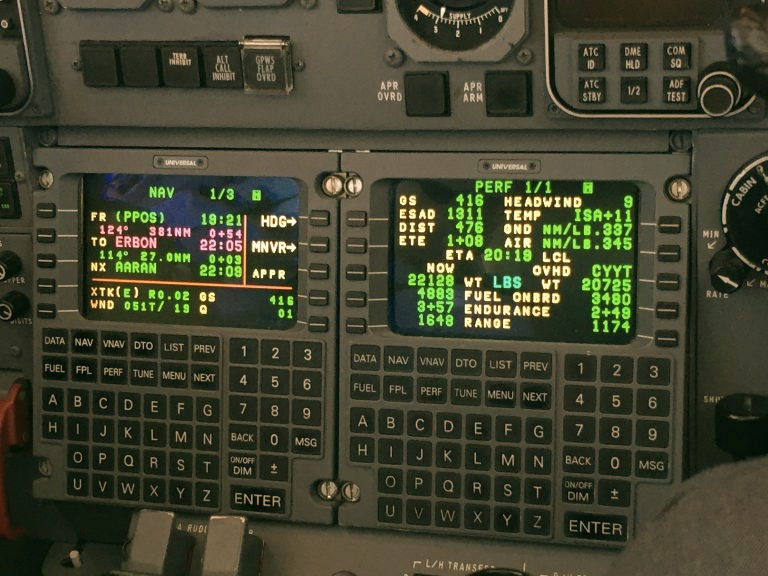
Using the above information we calculated a rough TOD for PIGTA.
FL340 Current Altitude
Waypoint (PIGTA) Max 210 Kts at 5000′
29,000 feet to lose
29000 x 3 (29 x 3) = 87 NM (+10NM or pilot decided extra distance to slow the aircraft down to 210 KIAS) = 97NM
We also discussed calculation of rough vertical speed required:
FL340 at Mach 0.77
Vertical Speed (ft/min) = Descent Angle (degrees) x Mach x 1000 VS = 3 x .77 x 1000 = 2.31 x 1000 = 2310 (2300 FPM) approx.

We discussed how to create your own CDAA (constant descent angle approach) TOD. In this example, we see that our VDA is already calculated for us. If we were using an FMS, we could enter the VDA at TESOX. Most FMS systems will determine a VNAV information (TOD), the point of this lesson was to determine rough TOD information to cross check your FMS.

What about our CDAA altitude at GAURA? We see a Min and a Max altitude restriction.
Using the profile view of the approach, we can calculate the distance from GAURA to the runway.
2 + 1.2 + 3 + 3.8 + 5 = 15 miles 15 x 300 = 4500′
4500′ plus field elevation (468′ rounded up) = 5000′
We can see that using 5000′ (the top restriction altitude) will keep us on a 3:1 profile.
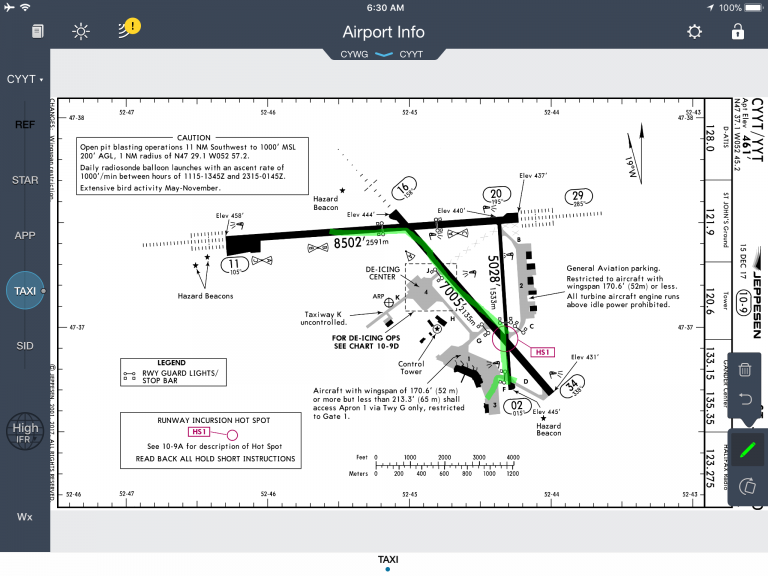
We discussed how to manage a complex taxi instruction from ATC. Using the Jeppesen App to highlight your route and provide additional situational awareness. Asking for progressive taxi.

We discussed the role of the Right Seat Pilot after arrival, completing checklists, recording landing times “ON”, recording our “IN” times, fuel used and completing paperwork. (typical CYEG – CYYC flight shown above).

I had a great time with the Commercial Pilot Students at Cooking Lake Aviation Academy and look forward to seeing them again soon.



Comments